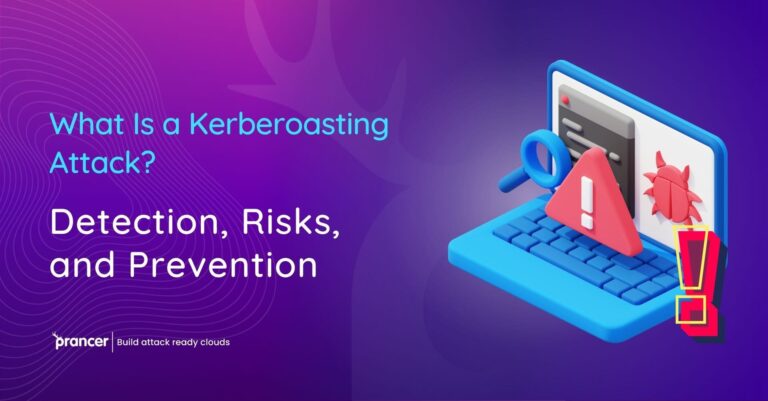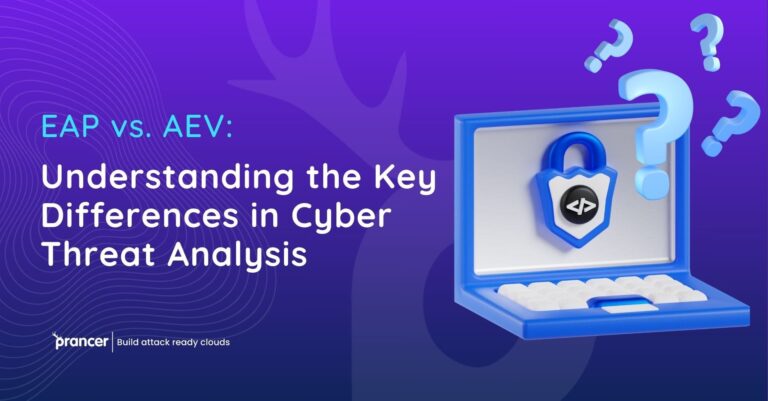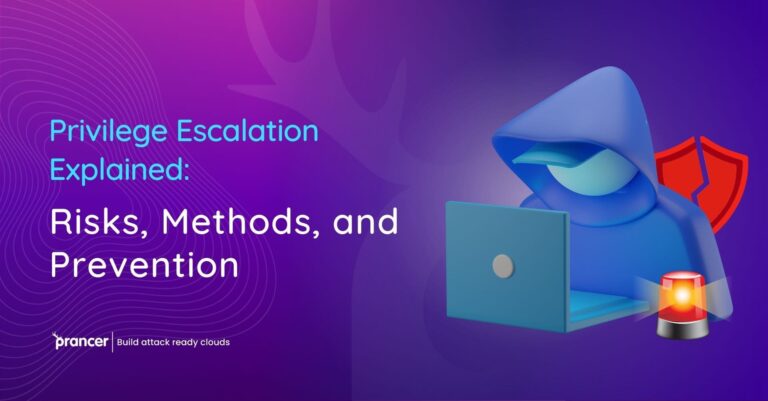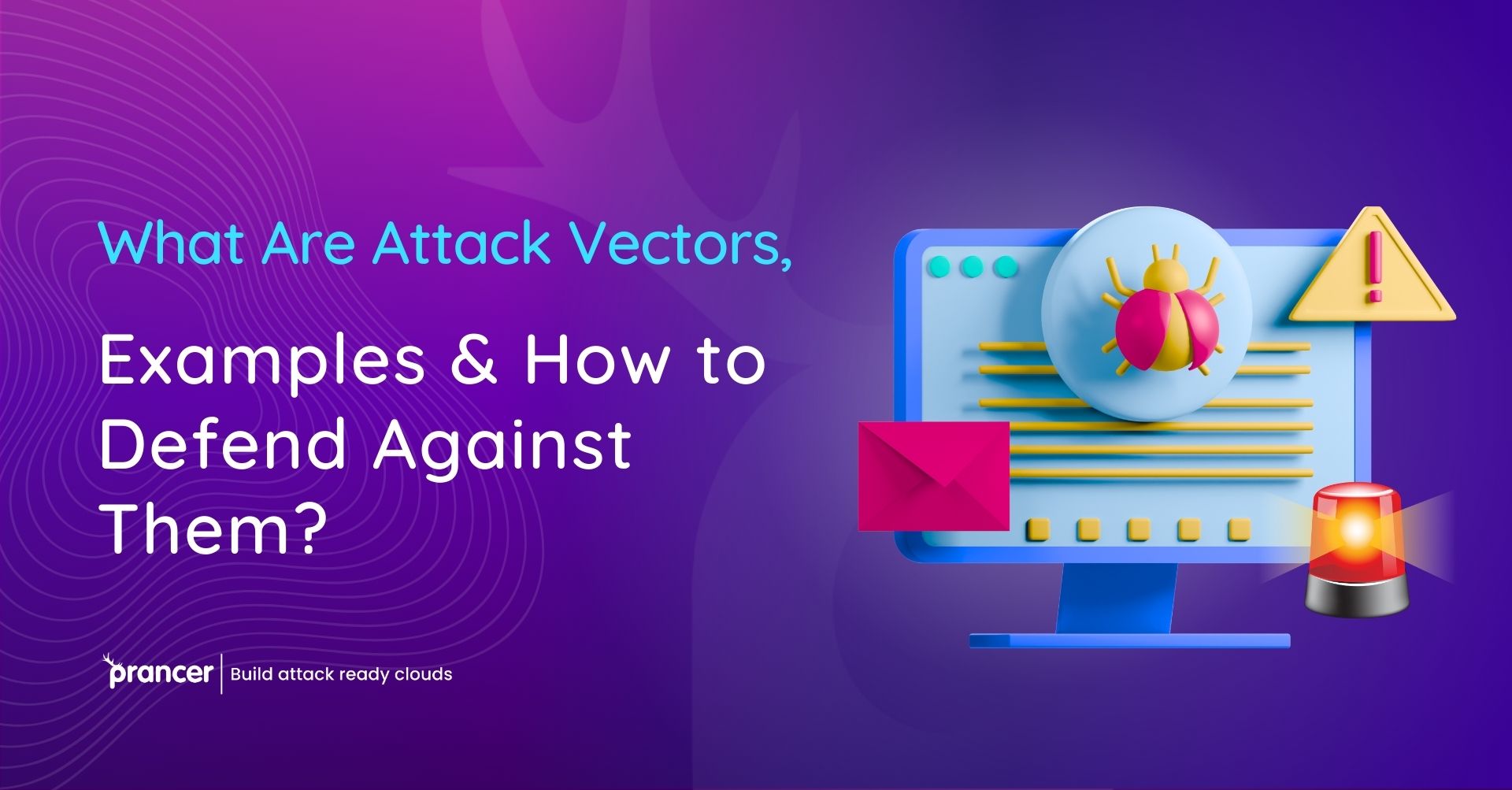For those working in cybersecurity, one thing remains constant: In an ever-evolving world of cybersecurity, knowing your attack vectors is not a luxury, it’s a necessity. Hackers exploit vulnerabilities in networks and compromise sensitive data; these are the tactics and methods used by them to infiltrate networks and are called attack vectors. While these threats come in the form of phishing scams, malware, or even insider threats, neither one is less dangerous than the next. These vectors are something businesses, and individuals, have to be aware of, and defending against them requires vigilance, strategy, and the right tools. Reducing these risks is key, and solutions like automated penetration testing – like we offer with Prancer – offer a proactive way to identify and patch these vulnerabilities to keep one step ahead of those with malicious intent.
This section will discuss attack vectors.
Attack vector is a way for hackers to attack a system or a network. From a phishing email to exploiting an unpatched vulnerability in software, these vectors take many forms. You can think of leaving an unlocked door, however small, however insignificant, and it’s all a hacker needs to access sensitive information. Companies like Prancer, which provides automated penetration testing, specialize in finding these vulnerabilities (and they do it before cybercriminals do). Attack vectors should definitely not be looked at solely by the IT team; all organisations should have this on their radar in today’s world.
Understanding the Attack Vectors is Important
Why does it matter? That’s because the attack vector is the first step in nearly every data breach or cyberattack. Organizations can block these threats by understanding the different ways in which attackers operate. It’s big stakes: data breaches cost companies millions and can destroy reputations beyond repair. With awareness and tools like automated penetration testing from Prancer these businesses can avoid being the next victim of a cyberattack.
They have various attack vectors, which are common types of attack vectors.
Attack vectors are multiple, and cybercriminals are using them to take advantage of different vulnerabilities. Here’s a breakdown of the most common ones:
- Phishing Attacks: These are emails or messages that are not real emails and messages that people use to trick people into giving any sensitive information.
- Malware: Ransomware, spyware and trojans attack systems in order to steal or corrupt data.
- Man-in-the-Middle (MITM): This is an intercept attack between two parties.
- Insider Threats: The risks of misusing access are great: disgruntled or careless employees.
- Brute Force Attacks: Password cracking is done by hackers using automated tools.
- Zero-Day Exploits: Before developers release a fix, they target these software vulnerabilities.
Many of these attack vectors, left unchecked, can cripple an organization. Prancer comes in with innovative security solutions, that were.
We understand the essential need to protect your API framework. Through our automated penetration testing solutions we look for issues in your APIs to stop cyberattacks early.
Real – Life Attack Vectors: Some examples of real-life attack vectors:
This is illustrated by real world cyber-attacks that go unchecked. For instance:
- Target Data Breach (2013): The theft of 40 million credit card numbers was due to attackers exploiting third party vendor credentials.
- WannaCry Ransomware (2017): Over 200,000 computers worldwide got infected by this ransomware via a Microsoft systems vulnerability.
- SolarWinds Hack (2020): Several U.S. government agencies were compromised through a supply chain attack that hit their software updates.
Every case is a pointer to the need for proactive defenses such as automated penetration testing to find vulnerabilities before they’re exploited.
Phishing: A Leading Attack Vector
Phishing continues to be one of the most effective and most common attack vectors. Why? It’s because it preys on human error. For example, an employee might click on an email link that looks legitimate but will install malware. Using automated penetration testing, Prancer helps you simulate phishing scenarios to train your employees to spot and avoid these types of threats.
Malware in Cyber Threats
Malware is a broad category of malicious software that includes:
- Ransomware: It locks files until ransom is paid.
- Spyware: Gathers user activity without consent.
- Trojans: In the form of genuine software to fool users.
The programs can penetrate a system by downloading, USB drive or network vulnerabilities. With tools provided by Prancer, malware can be detected and neutralized before it can do serious damage.
Social Engineering: The Human Factor
An attack vector called social engineering aims for the weakest link in cybersecurity: people. Hackers will impersonate, manipulate or otherwise extract confidential information. It’s like a con man getting into a secure building. Technical measures are needed to combat this, in combination with comprehensive employee training.
How does Automated Penetration Testing identify vulnerabilities?
Consider the cybersecurity system as a fortress. The walls may seem impenetrable, but how can it be that there are hidden cracks? Also, like Prancer’s services, automated penetration testing provides a controlled simulation of a cyberattack. It identifies and fixes these cracks before attackers could have exploited them, realizing strong defenses.
Secure your systems—book a demo today!
Cybersecurity Defense involving Prancer
At Prancer, our mission is simple: to get cybersecurity proactive and comprehensive. We help businesses find weaknesses and secure systems by using cutting edge tools such as automated penetration testing and keeping up to date with evolving cyber threats. We are experts across industries, delivering custom solutions for protection against various attack vectors.
How to Defend Against Attack Vectors
Defending against attack vectors requires a layered approach:
- Regular Software Updates: Patch vulnerabilities as soon as you can.
- Strong Password Policies: Make complex, regularly updated passwords a reality.
- Multi-Factor Authentication (MFA): It gives you an extra layer of protection.
- Employee Training: Teach staff on phishing and social engineering.
- Advanced Tools: Don’t get burned by attackers; use services like Prancer’s automated penetration testing to stay ahead of them.
By combining these measures, organizations can greatly lower risk.
This paper discusses future Cyber Threats and Attack Vectors.
The cyber threat landscape is changing fast. Emerging trends include:
- AI-Driven Attacks: Machine learning being used to craft a more sophisticated threat.
- IoT Exploits: Vulnerabilities in connected devices.
- Cloud-Based Attacks: The threat landscape for cloud is growing in tandem with cloud adoption.
With Prancer, you can stay ahead of these trends.
Businesses Need Automated Testing Tools.
Modern attack vectors are no longer countered with traditional security measures. A continuous view of security, threat detection and automated tools keep systems safe, even as threats change over time. Particularly vital to this fight is Prancer’s automated penetration testing.
Prancer adds to the security strategies in many ways.
Prancer uses state of the art technology to help organizations build strong cybersecurity strategies. With our automated penetration testing, we identify vulnerabilities, provide actionable insights and verify industry standards.
Employees are the first line of defense; they are often the first line of attack. They can be trained to detect phishing emails, create secure passwords and use basic cybersecurity protocols. On top of it, tools such as Prancer’s automated penetration testing can make a complete defense strategy.
Conclusion
It’s incumbent on everyone. First one has to understand attack vectors, their examples, and defense mechanisms to protect your digital assets. Prancer’s automated penetration testing will enable businesses to proactively identify and neutralize vulnerabilities before any attacks happen.




